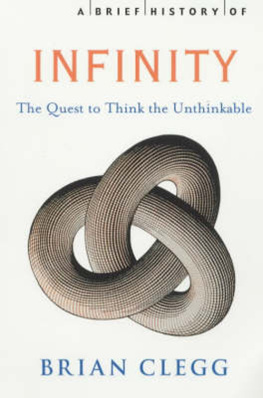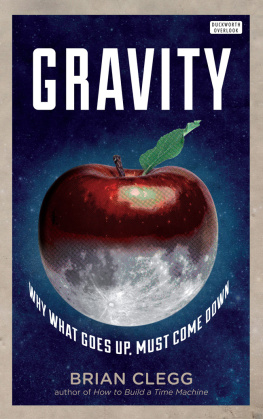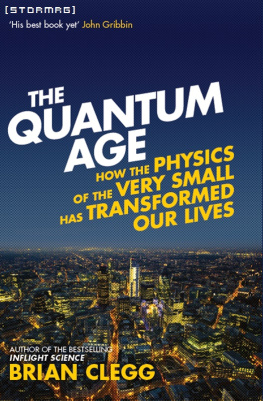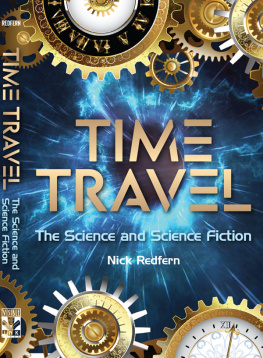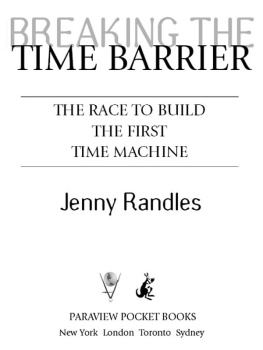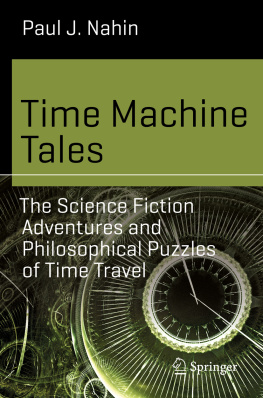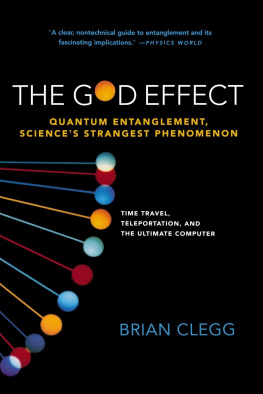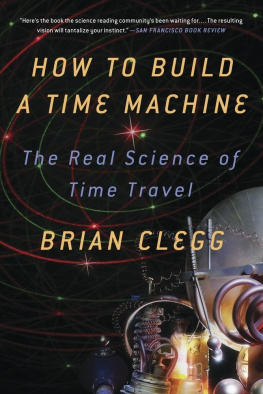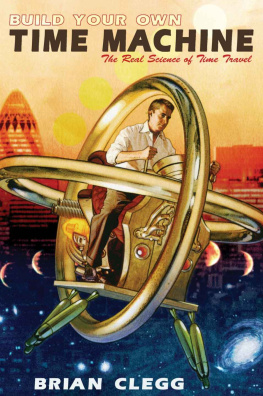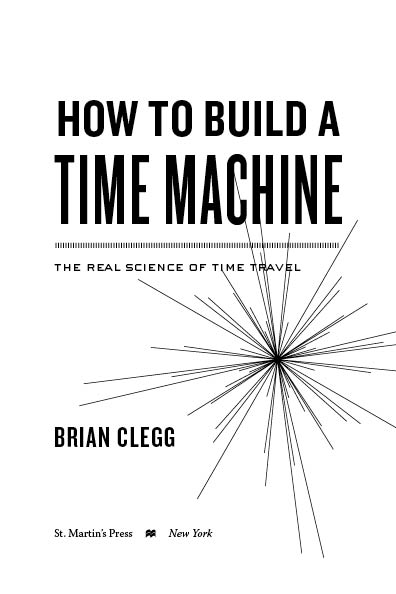
FOR GILLIAN, CHELSEA, AND REBECCA
CONTENTS
CHAPTER ONE
CHAPTER TWO
CHAPTER THREE
CHAPTER FOUR
CHAPTER FIVE
CHAPTER SIX
CHAPTER SEVEN
CHAPTER EIGHT
CHAPTER NINE
CHAPTER TEN
CHAPTER ELEVEN
CHAPTER TWELVE
CHAPTER THIRTEEN
CHAPTER FOURTEEN
ACKNOWLEDGMENTS
As always, this book would not have been possible without the expert help and support of my editor, Michael Homler.
Thanks to the many people who have helped me with information and ideas, including Dr. Marcus Chown, Professor Michio Kaku, Professor Ronald Mallett, Dr. Peet Morris, Professor Gnter Nimtz, and Professor Ian Stewart.
CHAPTER ONE
A GLITTERING METAL FRAMEWORK
Clearly, the Time Traveler proceeded, any real body must have extension in four directions: it must have Length, Breadth, Thickness andDuration. There are really four dimensions, three which we call the three planes of Space and, a fourth, Time. There is, however, a tendency to draw an unreal distinction between the former three dimensions and the latter.
Herbert George Wells (18661946), The Time Machine (1895)
Everyone can travel in time. Our adventures in this mysterious dimension are limited, but they exist. As far as forward travel goes, we are all on a conveyor belt through time, rolling into an uncertain future at a rate of one second per second. Inexorably we glide into the future, converting it into the present just as the moment that was once the present becomes the past.
We can also all travel backward in time, but this experience is quite different from our stately forward motion, uninterrupted except by death. Our travels backward are through the medium of memory, and lack that smooth steady progress of our forward motion. Instead, we jump around from time to time with startling rapidity. One moment we might be at a point in our childhood, which for some could be seventy, eighty, ninety years away. The next thing we know our memories are focused on events from ten minutes ago. There is no constraint to the speed at which memory can jump around in time.
You might argue, Thats just memory; its not time travel. After all, memories arent real. You arent actually there. But consider just how much your memories define who and what you are. Without them, you arent the same human beingthis is what is so distressing about the onset of neural diseases where an individual loses his or her memories. The journey back in time produced by a memory may not involve being physically transported, but it is much more real to us than many objective realities. A strong memory will far outweigh a news report from the other side of the world. The news may reflect something that is happening at that moment in time, but for the observer it could have relatively little significance.
There are even tourist destinations in the segments of time that have been relegated to history, points in our personal past that are hugely popular destinations for a whole host of mental time travelers. Most adults can remember where they were and what they were doing on September 11, 2001. These so-called flashbulb memories can be distorted like any other recollection. Yet this does not take away the fact that they are specific points in the time stream that many individuals can pinpoint and identify.
For those of us who are older, another date is a frequent destination, a date that is doubly significant for my personal interest in time travel. That date is November 22, 1963. Many people can remember what they were doing on that day when they heard the news that President John F. Kennedy had been assassinated. One of the effects of the terrible news was a disruption of TV schedules. And this was to have an impact on a show that was broadcast in the UK for the first time on the next day, Saturday, November 23, 1963.
The TV show was a new family drama called Doctor Who . Because so few people were watching TV in the aftermath of the Kennedy assassination, that first episode was repeated the following Saturday before the second episode was shown. It was Doctor Who that brought the concept of time travel to many British viewers, and later would be seen around the world. It proved an enduring concept, and after a break of a number of years, the show is again being made more than forty years later.
Although it wasnt long after that I came across the H. G. Wells novel The Time Machine, it was Doctor Who that first got me thinking about what it would mean to travel in time. The show rarely explored the paradoxes and peculiarities of time, but early on it did indulge in visits to periods in Earths history, past and future. Before long, the writers would focus more on travel to distant planets and alien life, but it was always possible to use time as part of the story line. To be honest, I always felt a lot more affection for Doctor Who than for the sometimes labored political allegory of Wells.
However, we cant dismiss that glittering metal framework, as the time machine is first described in the 1895 novelit is hugely significant. Although traveling in time was not a new idea even then, fictional time travel before that book had relied on dreams or magic to transport the time traveler. In Mark Twains A Connecticut Yankee in King Arthurs Court, for example, the central character, Hank Morgan, travels back to medieval England as a result of being hit on the head, and returns to the future after Merlin puts him into a magical sleep. (If your only experience of this story is the movie, read the novelits a much darker and more thoughtful book than the on-screen version suggests.)
In books like Mark Twains, time travel was fantasy, largely a mystical experience. But Wells transformed it into science fiction (even though that term was yet to be invented), a fictional concept of practical, solid achievement, opening up speculation about how time travel might be achieved and what the implications of traveling back to the Crucifixion, or visiting the far distant future of humanity, might be. Wells set us on the path of something more concrete, the product of the new, all-powerful science and technology that were transforming the real worldWells brought us the time machine .
The idea behind his book was to become a standard of science fiction. Along with a number of other conventionsfaster-than-light space travel, for instancethe concept of time travel would be used as the hook for a thousand stories. I absorbed a huge amount of science fiction as a teenager. It had, without doubt, a major role in my growing interest in real science. The possibilities for mind-bending storylines were endless.
Take Robert E. Heinleins classic short story All You Zombies (often confused with By His Bootstraps, which is also a time travel story). In this story, a time traveler returns to the past, where he unwittingly makes love to his own mother, fathering the child that will eventually be him. Later the mother, who turns out to have a genetic condition giving her both female and male sex organs, undergoes a sex-change operation. The now male mother is transformed into the time traveler himself. He has become a living paradox, a loop in time creating itself with no beginning and no end.
This sort of delightful paradox made time travel a gift to fiction writers, but the capability of freely moving around in time as if it were a true fourth dimension was assumed to be a fictional convention. It was the same kind of useful but unreal assumption as the ability to travel faster than light through some sort of jump or warp that has been common for many years in science fiction. But there was a surprise lurking behind that assumption.



